The global tank container market is expected to grow from USD 1.34 billion in 2019 to USD 3.27 billion by 2027, at a CAGR of 11.64% during the forecast period from 2020-2027. The growth in the oil and gas demand is one of the main driving factors for the growth of the tank container market. The demand for petroleum products has been continuously rising, which has resulted in an increasing need for tank container shipping services across the globe. Furthermore, the rising use of natural gas for power generation, propelling the growth of the market. However, high prices of tank containers are anticipated to hamper the market growth over the forecast period.
The tank container market has been segmented on the basis of application and region. The application segment includes the chemical industry, food and beverage industry, energy industry, and others. The energy industry segment held the largest market share of 38.12% and valued at USD 509.19 million in 2019. This is attributable due to the higher volume of product storage needs and provides stacked systems that offer less handling and a safer hookup of multiple systems.
The market has been divided into North America, Europe, Asia Pacific, South America, and Middle East & Africa. The Asia Pacific held the largest market share of 41.27% in 2019. China is the fastest-growing region in the tank container market with the highest CAGR of 10.72% owing to a steady demand for maintenance services. In China, most tank containers are refurbished every year. Around 1,500 tanks were refurbished or remanufactured in China during 2014, compared to 600 in South Africa and 900 refurbished by operators in-house, according to Asian Tank Container Organization.
Key players in the tank container market are Welfit Oddy (Pty) Ltd., UBH International Limited, Nantong CIMC Smooth Sail Container Co., Ltd., CIMC Tank, Singamas Container Holdings Limited, Nantong Tank Container CO., Ltd., Seaco Global Ltd, CXIC Group Containers Co. Ltd., Yuchai Dongte Special Purpose Automobile Co. Ltd., and EXSIF Worldwide, Inc. among others. Developing and developed countries are offering greater opportunities and major players are continuously focused on new developments, strategic partnerships, acquisitions and venture capital investments to obtain high growth in the market. In January 2020, CIMC Tank announced that it has entered into the UK market by launching a UK-based engineering and customer support centre with a market focus on intermodal tanks for the bulk transport of dangerous goods and food grade products.
This study forecasts revenue growth at global, regional, and country levels from 2014 to 2027. Fior Markets has segmented the on the basis of below-mentioned segments:
Chapter 1 Introduction 11
1.1 Research Methodology 11
1.2 FMR Desk Research 12
1.2.1 FMR Data Synthesis 13
1.2.2 Data Validation And Market Feedback 13
1.2.3 FMR Data Sources 14
Chapter 2 Global Tank Container Market Overview 16
2.1 Definition of Tank Container in This Report 16
2.2 Commercial Types of Tank Container 18
2.3 Downstream Application of Tank Container 19
2.3.1 Chemical Industry 20
2.3.2 Food and Beverage Industry 20
2.3.3 Energy Industry 21
2.3.4 Others 21
2.4 Development History of Tank Container 22
2.5 Market Status and Trend of Tank Container 2014-2027 23
2.5.1 Global Tank Container Market Status and Trend 2014-2027 23
2.6 Regional Tank Container Market Status and Trend 2014-2018 25
2.6.1 North America Market Status and Trend 2014-2018 25
2.6.2 Europe Market Status and Trend 2014-2018 27
2.6.3 APAC Market Status and Trend 2014-2018 29
2.6.4 Middle East and Africa Market Status and Trend 2014-2018 31
2.6.6 Latin America Market Status and Trend 2014-2018 35
Chapter 3 Global Market Status by Regions 37
3.1 Market Development of Tank Container 2014-2018 37
3.2 Production Market of Tank Container by Regions 39
3.2.1 Regions Production Value of Tank Container by Regions 41
3.2.2 Regions Demand Volume (Units) of Tank Container by Regions 46
3.3 Market Forecast of Tank Container by Regions 2019-2027 47
Chapter 4 Global Tank Container Production by Type 50
4.1 Production Volume of Tank Container by Types 50
4.2 Production Value of Tank Container by Types 55
4.3 Market Forecast of Tank Container by Types 60
Chapter 5 Global Market Status by Downstream Industry 64
5.1 Demand Volume of Tank Container by Downstream Industry 64
5.2 Market Forecast of Tank Container by Downstream Industry 69
Chapter 6 Market Driving Factor Analysis of Tank Container 72
6.1 Global Economy Situation and Trend Overview 72
6.2 Tank Container Downstream Industry Situation and Trend Overview 72
Chapter 7 Tank Container Market Competition Status by Major Manufacturers 73
7.1 Production Volume of Tank Container by Major Manufacturers 73
7.2 Production Value of Tank Container by Major Manufacturers 77
7.3 Basic Information of Tank Container Major Manufacturers 81
7.3.1 Plant Location and Established Time of Tank Container Major Manufacturer 81
7.4 Market Competition News and Trend 82
Chapter 8 Tank Container Major Manufacturers Introduction and Market Data 84
8.1 Welfit Oddy (Pty) Ltd. 84
8.1.1 Company Profile 84
8.1.2 Representative Tank Container Industry Product of Welfit Oddy (Pty) Ltd. 86
8.1.3 Tank Container Industry Sales, Revenue, Price and Gross Margin of Welfit Oddy (Pty) Ltd. 88
8.2 UBH International Limited 90
8.2.1 Company Profile 90
8.2.2 Representative Tank Container Industry Product of UBH International Limited 91
8.3 Nantong CIMC Smooth Sail Container Co., Ltd. (subsidiary of APAC International Marine Containers Group Co. Ltd.) 96
8.3.1 Company Profile 96
8.3.2 Representative Tank Container Industry Product of Nantong CIMC Smooth Sail Container Co., Ltd. 97
8.4 Singamas Container Holdings Limited 99
8.4.1 Company Profile 99
8.4.2 Representative Tank Container Industry Product of Singamas Container Holdings Limited 101
8.4.3 Tank Container Industry Sales, Revenue, Price and Gross Margin of Singamas Container Holdings Limited 103
8.5 Nantong Tank Container CO., Ltd. (subsidiary of Nantong Square Cold Chain Equipment Co., Ltd.) 105
8.5.1 Company Profile 105
8.5.2 Representative Tank Container Industry Product of Nantong Tank Container CO., Ltd. 106
8.5.3 Tank Container Industry Sales, Revenue, Price and Gross Margin of Nantong Tank Container CO., Ltd. 110
8.6 CXIC Group Containers Co. Ltd. 112
8.6.1 Company Profile 112
8.6.2 Representative Tank Container Industry Product of CXIC Group Containers Co. Ltd. 113
8.6.3 Tank Container Industry Sales, Revenue, Price and Gross Margin of CXIC Group Containers Co. Ltd. 117
8.7 Yuchai Dongte Special Purpose Automobile Co. Ltd. 119
8.7.1 Company Profile 119
8.7.2 Representative Tank Container Industry Product of Yuchai Dongte Special Purpose Automobile Co. Ltd. 121
8.8 EXSIF Worldwide, Inc. 123
8.8.1 Company Profile 123
8.8.2 Representative Tank Container Industry Product of EXSIF Worldwide, Inc. 124
8.9 Seaco Global Ltd (subsidiary of SeaCo SRL) 126
8.9.1 Company Profile 126
8.9.2 Representative Tank Container Industry Product of Seaco Global Ltd 127
Chapter 9 Upstream and Downstream Market Analysis of Tank Container 130
9.1.1 Industry Chain of Tank Container 130
9.2 Upstream Market and Representative Suppliers Analysis 131
9.2.1 Upstream Raw Material Market Analysis 131
9.2.2 Upstream Market and Representative Suppliers Analysis 132
9.3 Downstream Market and Representative Companies 133
9.3.1 Chemical Industry 133
9.3.2 Food and Beverage Industry 133
9.3.3 Energy Industry 133
9.3.4 Others 134
9.3.5 Representative Consumers of Tank Container by Industry 135
Chapter 10 Cost and Gross Margin Analysis of Tank Container 136
10.1 Proportion of Manufacturing Cost Structure 136
10.1.1 Labor Cost Analysis 137
10.1.1.1 USA Labor Cost Analysis 138
10.1 Manufacturing Process Analysis 142
10.2 Distributors/Traders List 143
Chapter 11 Research Findings and Conclusion 144
List of Figures
FIG. 1 Representative Commercial Product Picture of Tank Container 17
FIG. 2 Global Shipments Volume Share of Tank Container by Types in 2014 18
FIG. 3 Demand Volume Share of Tank Container by Downstream Industry in 2019 19
FIG. 4 Global Tank Container Market Status and Trend 2014-2027 23
FIG. 5 Global Tank Container Market Size Comparison in 2014, 2018 and 2027 24
FIG. 6 North America Tank Container Revenue and Growth Rate 2014-2018 25
FIG. 7 Europe Tank Container Revenue and Growth Rate 2014-2018 27
FIG. 8 APAC Tank Container Revenue and Growth Rate 2014-2018 29
FIG. 9 Middle East and Africa Tank Container Revenue and Growth Rate 2014-2018 31
FIG. 10 Rest of APAC Tank Container Revenue and Growth Rate 2014-2018 33
FIG. 11 Latin America Tank Container Revenue and Growth Rate 2014-2018 35
FIG. 12 Production Volume and Growth Rate of Tank Container 2014-2018 37
FIG. 13 Production Value and Growth Rate of Tank Container 2014-2018 38
FIG. 14 Production Value Share of Tank Container by Regions in 2015 43
FIG. 15 Production Value Share of Tank Container by Regions in 2018 44
FIG. 16 Production Value Growth Rate Comparison of Tank Container by Regions 2014-2018 45
FIG. 17 Production Volume Forecast Share of Tank Container by Regions in 2027 49
FIG. 18 Production Volume Share of Tank Container by Types in 2015 52
FIG. 19 Production Volume Share of Tank Container by Types in 2018 53
FIG. 20 Production Volume Growth Rate Comparison of Tank Container by Types 2014-2018 54
FIG. 21 Production Value Share of Tank Container by Types in 2015 57
FIG. 22 Production Value Share of Tank Container by Types in 2018 58
FIG. 23 Production Value Growth Rate Comparison of Tank Container by Types 2014-2018 59
FIG. 24 Production Volume Share Forecast of Tank Container by Types in 2027 61
FIG. 25 Production Value Share Forecast of Tank Container by Types in 2027 63
FIG. 26 Demand Volume Share of Tank Container by Downstream Industry in 2015 66
FIG. 27 Demand Volume Share of Tank Container by Downstream Industry in 2018 67
FIG. 28 Demand Volume Growth Rate Comparison of Tank Container by Downstream Industry 2014-2018 68
FIG. 29 Demand Volume Growth Rate Comparison of Tank Container by Downstream Industry in 2027 70
FIG. 30 Demand Volume Growth Rate Comparison of Tank Container by Downstream Industry 2019-2027 71
FIG. 31 Production Volume Share of Tank Container by Major Manufacturers in 2015 75
FIG. 32 Production Volume Share of Tank Container by Major Manufacturers in 2018 76
FIG. 33 Production Value Share of Tank Container by Major Manufacturers in 2015 79
FIG. 34 Production Value Share of Tank Container by Major Manufacturers in 2018 80
FIG. 35 Tank Container Revenue and Market Share of Welfit Oddy (Pty) Ltd. 2015-2018 89
FIG. 36 Tank Container Revenue and Market Share of Singamas Container Holdings Limited 2015-2018 104
FIG. 37 Tank Container Revenue and Market Share of Nantong Tank Container CO., Ltd. 2014-2018 111
FIG. 38 Tank Container Revenue and Market Share of CXIC Group Containers Co. Ltd. 2015-2018 118
FIG. 39 Industrial Chain of Tank Container 130
FIG. 40 Common Cost Structure of Tank Container 136
FIG. 41 USA Overview of Average Hourly Wages 2015-2016 (USD/Hour) 138
FIG. 42 Middle East and Africa CPI (2017-2018) 140
FIG. 43 Europe CPI (2014-2018) 141
FIG. 44 Manufacturing Process 142
List of Tables
TABLE 1 North America Tank Container Market Main Driving Factors Analysis 26
TABLE 2 Europe Tank Container Market Main Driving Factors Analysis 28
TABLE 3 APAC Tank Container Market Main Driving Factors Analysis 30
TABLE 4 Middle East and Africa Tank Container Market Main Driving Factors Analysis 32
TABLE 5 Rest of APAC Tank Container Market Main Driving Factors Analysis 34
TABLE 6 Latin America Tank Container Market Main Driving Factors Analysis 36
TABLE 7 Production Volume (Units) of Tank Container by Regions 2014-2018 39
TABLE 8 Production Volume Share of Tank Container by Regions 2014-2018 40
TABLE 9 Production Value (USD Million) of Tank Container by Regions 2014-2018 41
TABLE 10 Production Value Share of Tank Container by Regions 2014-2018 42
TABLE 11 Demand Volume of Tank Container by Regions 2014-2018 46
TABLE 12 Production Market Forecast of Tank Container by Regions 2019-2027 47
TABLE 13 Production Value Forecast of Tank Container by Regions 2019-2027 48
TABLE 14 Production Volume of Tank Container by Types 2014-2018 50
TABLE 15 Production Volume Share of Tank Container by Types 2014-2018 51
TABLE 16 Production Value of Tank Container by Types 2014-2018 55
TABLE 17 Production Value Share of Tank Container by Types 2014-2018 56
TABLE 18 Production Volume Forecast of Tank Container by Types 2019-2027 60
TABLE 19 Production Value Forecast of Tank Container by Types 2019-2027 62
TABLE 20 Demand Volume (Units) of Tank Container by Downstream Industry 2014-2018 64
TABLE 21 Demand Volume Share of Tank Container by Downstream Industry 2014-2018 65
TABLE 22 Demand Volume (Units) of Tank Container by Downstream Industry 2019-2027 69
TABLE 23 Production Volume (Units) of Tank Container by Major Manufacturers 2014-2018 73
TABLE 24 Production Volume Share of Tank Container by Major Manufacturers 2014-2018 74
TABLE 25 Production Value (USD Million) of Tank Container by Major Manufacturers2014-2018 77
TABLE 26 Production Value Share of Tank Container by Major Manufactures 2014-2018 78
TABLE 27 Plant Location and Established Time of Tank Container Major Manufacture 81
TABLE 28 Company Profile of Welfit Oddy (Pty) Ltd. 84
TABLE 29 Tank Container Industry Sales, Revenue, Price and Gross Margin of Welfit Oddy (Pty) Ltd. 2015 -2018 88
TABLE 30 Company Profile of UBH International Limited 90
TABLE 31 Company Profile of Nantong CIMC Smooth Sail Container Co., Ltd. 96
TABLE 32 Company Profile of Singamas Container Holdings Limited 99
TABLE 33 Tank Container Industry Sales, Revenue, Price and Gross Margin of Singamas Container Holdings Limited 2015-2018 103
TABLE 34 Company Profile of Nantong Tank Container CO., Ltd. 105
TABLE 35 Tank Container Industry Sales, Revenue, Price and Gross Margin of Nantong Tank Container CO., Ltd. 2015-2018 110
TABLE 36 Company Profile of CXIC Group Containers Co. Ltd. 112
TABLE 37 Tank Container Industry Sales, Revenue, Price and Gross Margin of CXIC Group Containers Co. Ltd. 2015-2018 117
TABLE 38 Company Profile of Yuchai Dongte Special Purpose Automobile Co. Ltd. 119
TABLE 39 Company Profile of EXSIF Worldwide, Inc. 123
TABLE 40 Company Profile of Seaco Global Ltd 126
TABLE 41 Upstream Raw Material Representative Suppliers Analysis 132
TABLE 42 Representative Consumers of Tank Container by Industry 135
TABLE 43 Manufacturing Cost Structure 136
Market research is a method of gathering, assessing and deducing data & information about a particular market. Market research is very crucial in these days. The techniques analyze about how a product/service can be offered to the market to its end-customers, observe the impact of that product/service based on the past customer experiences, and cater their needs and demands. Owing to the successful business ventures, accurate, relevant and thorough information is the base for all the organizations because market research report/study offers specific market related data & information about the industry growth prospects, perspective of the existing customers, and the overall market scenario prevailed in past, ongoing present and developing future. It allows the stakeholders and investors to determine the probability of a business before committing substantial resources to the venture. Market research helps in solving the marketing issues challenges that a business will most likely face.
Market research is valuable because of the following reasons:
Our research report features both the aspects; qualitative and quantitative. Qualitative part provides insights about the market driving forces, potential opportunities, customer’s demands and requirement which in turn help the companies to come up with new strategies in order to survive in the long run competition. The quantitative segment offers the most credible information related to the industry. Based on the data gathering, we use to derive the market size and estimate their future growth prospects on the basis of global, region and country.
Our market research process involves with the four specific stages.

Data Collection: This stage of the market research process involves with the gathering and collecting of the market/industry related data from the sources. There are basically two types of research methods:
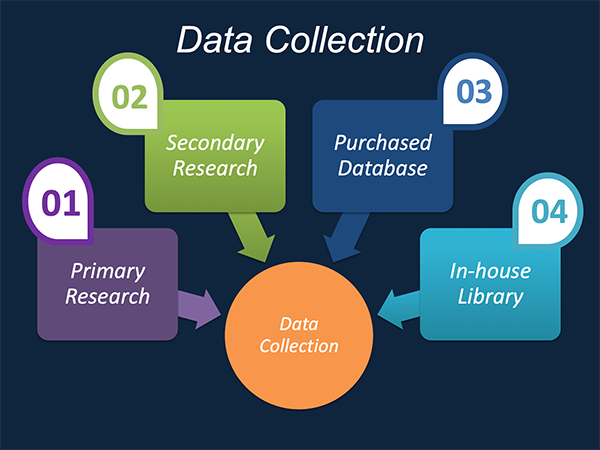
Data Synthesis: This stage includes the evaluation and assessment of all the data acquired from the primary and secondary research. It likewise includes in evaluating the information for any disparity watched while information gathering identified with the market. The data & information is gathered with consideration to the heterogeneity of sources. Scientific and statistical methods are implemented for synthesizing dissimilar information sets and provide the relevant data which is fundamental for formulating strategies. Our organization has broad involvement with information amalgamation where the information goes through different stages:


Market Formulation & Deduction: The last stage includes assigning the data & information in a suitable way in order to derive market size. Analyst reviews and domain based opinions based on holistic approach of market estimation combined with industry investigation additionally features a crucial role in this stage.
This stage includes with the finalization of the market size and numbers that we have gathered from primary and secondary research. With the data & information addition, we ensure that there is no gap in the market information. Market trend analysis is finished by our analysts by utilizing data extrapolation procedures, which give the most ideal figures to the market.
Data Validation: Validation is the most crucial step in the process. Validation & re-validation through scientifically designed technique and process that helps us finalize data-points to be used for final calculations. This stage also involves with the data triangulation process. Data triangulation generally implicates the cross validation and matching the data which has been collected from primary and secondary research methods.





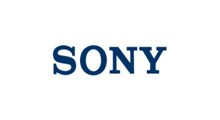

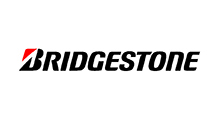

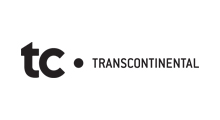















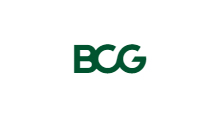


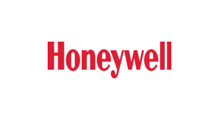

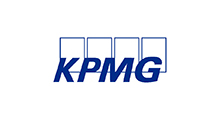
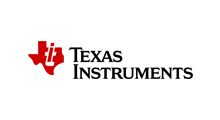



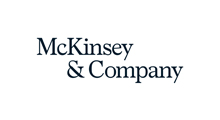

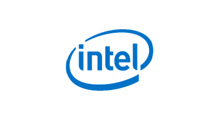







Free Customization
Countries can be added on demand
Free yearly update on purchase of Multi/Corporate User License
Companies served till date

We serve our customers 24x7 for 365 days through calls, emails and live chat options.

Huge database of exceptional market reports bringing market intelligence to your fingertips.

SSL enabled, we offer you various secured payment options for risk free purchase.